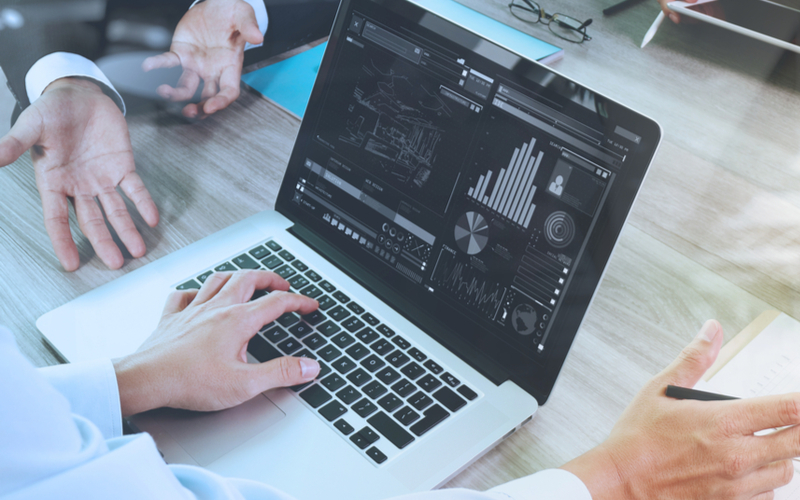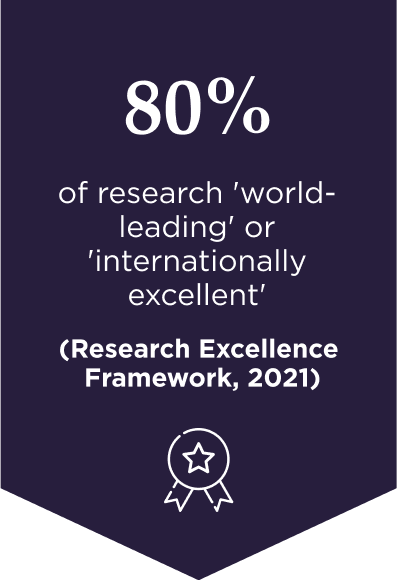Data analytics and the digital age
Posted on: September 2, 2021
In today’s digital world, data is being amassed at a faster rate than ever before.
As individuals, as a society, as a global population, our digital footprints generate colossal volumes of data as we go about our daily lives – often without us even realising.
As TechJury illustrate, data and big data are forces to be reckoned with:
- 97.2% of organisations are investing in big data and artificial intelligence (AI)
- In 2020, every person generated 1.7 megabytes of data in a second
- The big data analytics market is predicted to reach $103 billion by 2023
- 95% of businesses cite the need to manage unstructured data as a problem for their business
Clearly, a data-driven business is one that understands – at a deep level – how critical data is to its success, and how the benefits of data can allow it to stay ahead of competitors.
What is data analysis and why is it important?
Intel defines data analysis as the process by which raw data becomes usable knowledge that can be acted on.
It involves collecting, modelling and analysing information to extract valuable insights, and can impact and inform a great variety of business decisions – including market research, positioning, customer feedback, product development and research, and strategy. Additionally, it can be used to investigate any other issue for which data exists.
Making decisions based on data enables organisations to make better, more informed decisions. Leaders are becoming increasingly clued up on how data collection and data processing can help to troubleshoot existing business issues, gain insight into target demographics and their requirements, develop future products and services, and enhance their overall results and performance.
A wealth of industries are now utilising data and technology to these ends. For example, in healthcare, patient-reported text analytics are used to evaluate and develop practitioners, machine learning algorithms can detect anomalies in scans, and data sources can predict trends in outbreaks in order to adequately prepare.
What is big data analysis?
IBM defines big data analytics as the use of advanced analytic techniques against very large, diverse data sets that include structured, semi-structured and unstructured data, from different sources, and in different sizes from terabytes to zettabytes.
Big data is often produced in real time and at huge scale. Its sources are numerous – sensors, devices, video and audio, networks, log files, transactional applications, web interaction and use, social media – and often produced by AI, the Internet of Things and mobile.
By using these highly scaled sets of data, big data can uncover new relationships between, and better understanding of, vast amounts of complex information. Its scope is beyond the ability of traditional relational databases, and it possesses one of more of the following characteristics:
- High volume
- High velocity
- High variety
Much of this data was previously inaccessible or unusable. Together with existing enterprise data, business leaders rely on big data analysis to make quicker, more effective decisions.
Methods of data analysis
A clear understanding of the data analysis process and the data analysis tools available can help a business to focus its efforts.
Data analysis generally falls into two main categories: quantitative data methods (numerical, measurable information, such as sales figures) and qualitative data methods (non-numerical, descriptive information, such as a written customer review).
The following types of data analysis can be applied to any issue that has data related to it:
- Descriptive analysis: This type of data analysis uses historical data to investigate what has happened. For example, tracking Key Performance Indicators (KPIs), sales leads and revenue from various demographics.
- Diagnostic analysis: After descriptive analysis has revealed what happened (whether positive or negative), diagnostic analysis can help to determine why it happened. For example, a business that sees increased sales leads in February can identify which marketing campaigns or activities were most effective during that period.
- Predictive analysis: This type of data analysis assesses trends in past data in order to predict what is expected to happen in the future. For example, a business can estimate what the next three years’ revenue are likely to be based on what happened in previous years. This method can be useful in sales forecasting, risk assessment or lead generation.
- Prescriptive analysis: By combining descriptive, diagnostic and predictive data analysis, prescriptive analysis aims to develop a course of action to achieve the intended outcome. It helps an organisation to make data-driven choices.
Analysing and representing data
Datapine’s 15 essential steps is a useful framework for organisations who want to dig deeper into their data analysis techniques and requirements:
- Collaborate business needs – decide on primary strategic goals and gain an understanding of which data insights would be most beneficial
- Establish questions – identify the questions that need answering in order to extract the maximum value to meet business goals
- Democratise the data – connect the various data sources and make them accessible in a structured format
- Clean the data – eliminate unnecessary information to provide the clearest insights, e.g. remove any duplication
- Set KPIs – set measures to help track, measure and shape business progress in key areas
- Omit useless data – remove any statistics, figures, metrics or facts that do not align with business goals or KPIs
- Create a data management roadmap – this will support future data analysis efforts and techniques, and help to store, manage and handle data in a sustainable way
- Integrate technology – choose robust analysis platforms that pull critical data from the most useful sources and present it in a digestible, visual way. For example, some every-day business software, such as Microsoft Excel, has in-built functionality such as regression analysis or data mining
- Answer the questions – use the data to identify answers to the initial questions
- Use data visualisation – visualising data points and metrics with graphs, infographics and tables allows users to extract meaningful insights
- Interpret data – give meaning to the information and draw concise conclusions from the results, while remaining wary of correlation vs. causation, confirmation bias, and statistical significance
- Build a narrative – use data storytelling to make analytical efforts more communicable, accessible and universal
- Consider autonomous technology – AI and machine learning play a significant role in understanding how to analyse data more effectively
- Share the load – easy-to-use dashboards allow all relevant members of an organisation to access and make use of data insights, which establishes and reinforces a data-driven business mindset
- Use data analysis tools – choose tools and software that will produce the best results. For example, SQL consoles such as Tableau, data visualisation, business intelligence tools, and programming languages such as Python.
Stay ahead of business competitors in the digital age
Eager to develop your understanding and use of datasets in business? Interested in becoming a data analyst or working with data science?
Learn how to harness statistical and other data to underpin decision-making processes with Keele University. Our online MSc Computer Science with Data Analytics will support you to maximise the use of technology and information in organisational performance.



